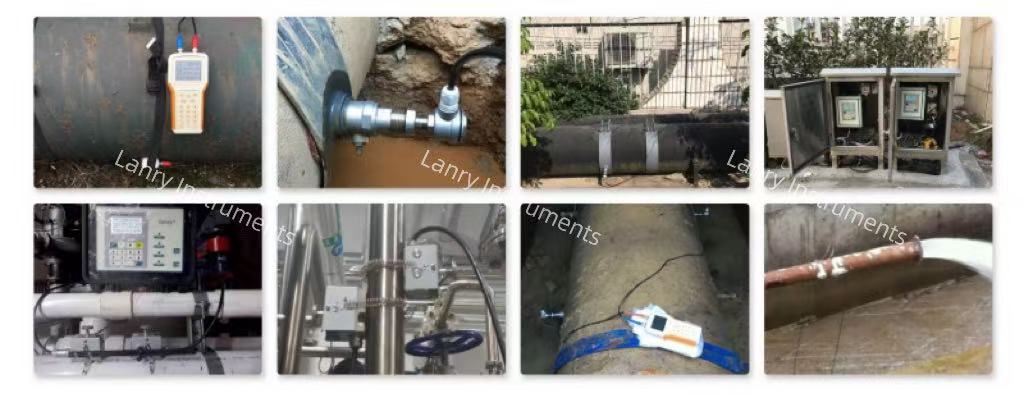Flow meters are widely used instruments in industries to measure the flow of fluids such as liquids, gases, and steam. During the measurement process, the fluid usually experiences some resistance as it passes through the flow meter, leading to a drop in pressure. This phenomenon is known as pressure loss. The magnitude of pressure loss not only affects the accuracy of the measurement but also impacts the system's energy efficiency and operating costs. This article will explain what flow meter pressure loss is, which flow meters have higher pressure loss, which ones have lower, and how to select the right flow meter.
1. What is Flow Meter Pressure Loss?
Flow meter pressure loss refers to the reduction in fluid pressure caused by internal structural factors of the flow meter, such as bends in the pipeline, contractions in orifices, and other resistive elements. Each flow meter has a different design, and as a result, different flow meters offer varying degrees of resistance to the fluid flow, causing different levels of pressure loss.
The main causes of flow meter pressure loss include:
- Changes in fluid flow direction (such as internal resistance, bends, etc.)
- Friction from internal components (such as turbines, sensors)
- Changes in fluid velocity
- Local pressure loss in the flow meter’s internal components
The greater the pressure loss in the flow meter, the more energy is lost as the fluid flows through it, which can lead to higher energy consumption and even impact the stability of fluid flow.
2. Which Flow Meters Have Higher Pressure Loss?
Some flow meters generate relatively higher pressure losses due to their working principles and design features. Below are a few flow meters that generally produce higher pressure loss:
Turbine Flow Meters
Turbine flow meters measure flow by the rotation of a turbine powered by the fluid. The friction between the turbine and fluid, as well as changes in flow direction, lead to higher pressure loss. Turbine flow meters generally have significant pressure loss, especially at low flow rates. These meters are suited for medium to high flow applications but are not ideal for situations requiring high precision or low flow.
Orifice Plate Flow Meters
Orifice plate flow meters measure flow by creating a velocity change when fluid passes through a small hole. The pressure difference before and after the orifice results in a notable pressure loss. The pressure loss is particularly high when dealing with large flow rates. Orifice plate flow meters are typically used for large pipelines and high flow applications, but are not suitable for scenarios where low pressure loss is critical.
Venturi Tube Flow Meters
Venturi tube flow meters measure flow by the velocity change that occurs when fluid passes through a narrowing part of the pipe. Although the design of the venturi tube is optimized for reduced pressure loss, it still generates significant pressure loss, especially at higher fluid velocities. While it provides accurate measurements, it is not ideal for systems with strict pressure loss requirements.
3. Which Flow Meters Have Lower Pressure Loss?
Some flow meters are designed with simple structures that effectively reduce fluid resistance, resulting in lower pressure loss. Here are a few flow meters with relatively low pressure loss:
Ultrasonic flow meters measure flow by transmitting and receiving ultrasonic signals. Since there are no moving internal parts, they cause almost no resistance to fluid flow. The pressure loss in ultrasonic flow meters is almost zero, making them ideal for applications requiring low pressure loss. These meters are commonly used in pipelines and do not interfere with fluid flow, nor do they contaminate the fluid.
Electromagnetic Flow Meters
Electromagnetic flow meters operate based on Faraday’s law of electromagnetic induction. They do not rely on the fluid's properties and have no mechanical parts. As fluid passes through the electromagnetic flow meter, it experiences virtually no pressure loss. These meters are suitable for large flow measurements and high precision applications, particularly for conductive liquids.
Coriolis Mass Flow Meters
Coriolis mass flow meters measure flow by detecting the change in mass of the fluid, and their design typically doesn't include any elements that impede fluid flow. As a result, they generate very low pressure loss. They are particularly well-suited for high precision, low pressure loss-sensitive applications such as in the chemical and oil industries.
Thermal Mass Flow Meters
Thermal mass flow meters measure the flow by detecting changes in fluid temperature. These meters also typically do not create significant resistance to fluid flow, which means their pressure loss is low. Thermal mass flow meters are often used for gas flow measurement.
4. How to Choose the Right Flow Meter?
When selecting a flow meter, in addition to factors such as measurement accuracy, price, and service life, the pressure loss is a crucial consideration. For systems that need to maintain stable flow rates and low energy consumption, selecting a flow meter with low pressure loss is essential.
- Ultrasonic flow meters and electromagnetic flow meters are ideal for situations that require low pressure loss, especially when fluid must pass through the pipe with minimal interference.
- Turbine flow meters and orifice plate flow meters are suited for high flow applications where pressure loss is less critical, but caution should be exercised in low flow conditions due to the potential for higher pressure loss.
Conclusion
The pressure loss in a flow meter directly affects the energy efficiency and stability of the fluid system. When selecting a flow meter, it's important to consider the fluid's characteristics, flow range, and the system's sensitivity to pressure loss. By understanding the pressure loss characteristics of different flow meters, you can make a more informed choice to optimize your flow measurement system, reduce energy consumption, and improve operational efficiency.

Post time: Mar-03-2025

